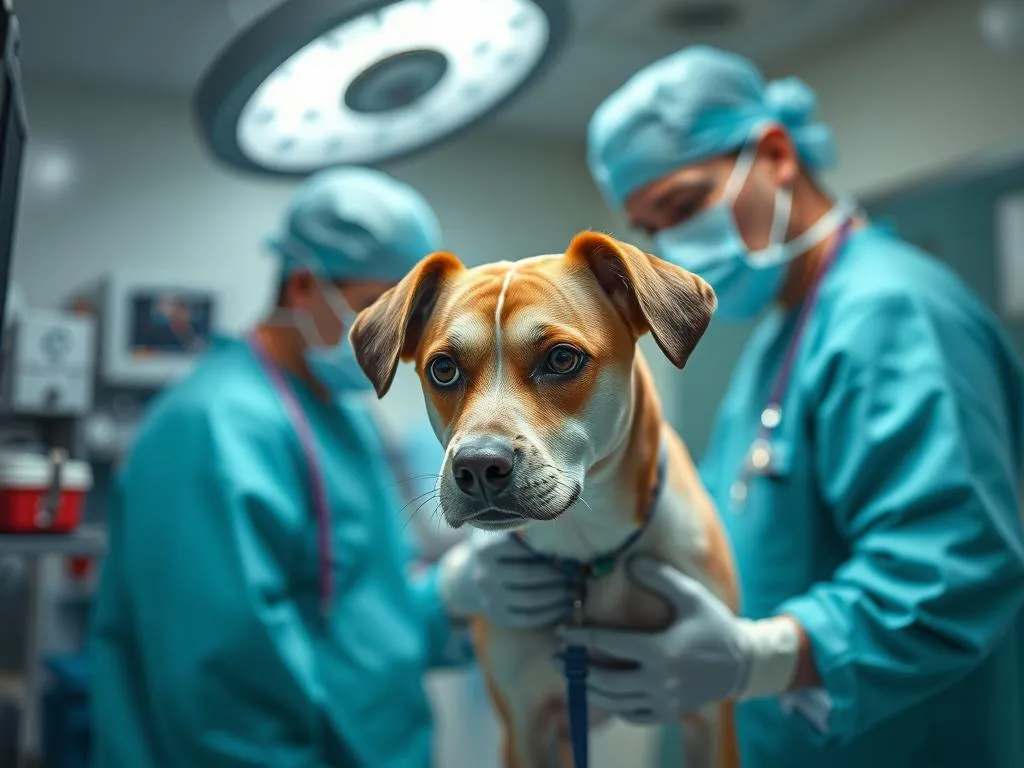
Emergency veterinary care is an essential aspect of responsible pet ownership. Just like humans, dogs can experience unexpected health crises that require immediate medical attention. Understanding what happens behind the scenes at an emergency vet hospital can demystify the process and prepare pet owners for potential emergencies.
Understanding Emergency Veterinary Care
Definition and Importance
Emergency veterinary care is specialized medical treatment provided to animals in urgent situations. This type of care is crucial because delays can lead to worsening health conditions or even death. Common emergencies faced by dog owners include trauma from accidents, severe allergic reactions, ingestion of toxic substances, and sudden illnesses such as bloat or seizures. According to statistics, approximately 10% of pet owners will face an emergency situation each year, highlighting the importance of being prepared.
Types of Emergency Vet Services
Emergency vet services encompass a wide array of medical interventions. These typically include:
- Surgery: Emergency surgeries may be necessary for conditions like ruptured tumors or severe internal injuries.
- Diagnostics: Essential tools such as X-rays, ultrasounds, and blood tests help identify the underlying issues quickly.
- Critical Care: Intensive monitoring and treatment for severely ill or injured animals, often in specialized units.
Unlike routine vet visits, emergency care is centered on addressing urgent health concerns, often requiring immediate action in high-pressure environments.
The Emergency Vet Team
Roles and Responsibilities
An emergency vet hospital operates as a well-coordinated team. Key members include:
- Veterinarians: Responsible for diagnosing and treating medical emergencies.
- Veterinary Technicians: Assist with procedures, monitor vital signs, and administer medications.
- Support Staff: Handle administrative tasks, client communication, and the overall workflow of the hospital.
Effective teamwork is vital, especially in critical situations where every second counts.
Training and Expertise
Emergency veterinarians undergo extensive training. They typically complete a Doctor of Veterinary Medicine (DVM) program, followed by internships and residencies specific to emergency and critical care. Many emergency vets pursue additional certifications to enhance their skills. Continuing education is also crucial, as advances in veterinary medicine require ongoing learning to provide the best care possible.
The Emergency Vet Facility
Layout and Equipment
A typical emergency vet hospital is designed for efficiency and rapid response. Key areas usually include:
- Reception Area: Where emergency cases are triaged and assessed upon arrival.
- Treatment Rooms: Equipped for various procedures and diagnostics.
- Surgical Suites: Designed for emergency surgeries, stocked with necessary tools and equipment.
- Recovery Areas: Where pets can be monitored post-treatment.
Crucial equipment found in these facilities includes:
- X-ray machines: For imaging injuries or foreign objects.
- Ultrasound machines: To diagnose internal conditions.
- Anesthesia machines: Essential for surgical procedures.
Safety Protocols
Infection control is a top priority in emergency settings. Safety protocols include:
- Sterilization: Regular cleaning and sterilization of equipment and surfaces.
- Hazardous Material Handling: Procedures for safely managing biohazard waste and medications to protect both staff and animals.
Adhering to strict safety protocols ensures a safe environment for both pets and the medical team.
Patient Intake and Assessment
Initial Evaluation Process
When a dog arrives at an emergency vet hospital, the first step is the intake process. This involves:
- Collecting information about the pet’s symptoms and medical history.
- Conducting an initial physical exam to assess vital signs and overall condition.
Triage is essential in this process, as it helps prioritize cases based on severity. For instance, a dog experiencing respiratory distress will receive immediate attention over one with a minor scrape.
Diagnostic Tools Used
Once a dog is triaged, various diagnostic tools may be employed, including:
- Blood Tests: To evaluate organ function and detect infections.
- Imaging: X-rays and ultrasounds can reveal fractures, foreign objects, or internal bleeding.
These diagnostic tools are critical in formulating an effective treatment plan.
Treatment and Care
Common Emergency Treatments
The treatments provided in emergency situations can vary widely but often include:
- Fluid Therapy: To address dehydration or shock.
- Surgery: For conditions such as foreign body ingestion or traumatic injuries.
- Medications: To manage pain, inflammation, or infections.
For example, a dog that has ingested a toxic substance may require immediate surgery to remove the item and supportive care to manage symptoms.
Pain Management and Comfort
Managing pain is a significant aspect of emergency care. Techniques include:
- Medications: Pain relief drugs tailored to the dog’s condition.
- Comfort Measures: Providing a quiet, safe space for the pet to recover.
Emotional support for both pets and their owners is also crucial. Staff often take the time to reassure owners and provide information about their pet’s condition and treatment plan.
Aftercare and Follow-Up
Post-Treatment Care
After treatment, pet owners receive detailed instructions about their dog’s care. This may include:
- Medication schedules.
- Activity restrictions.
- Signs of complications to watch for.
Follow-up visits are often necessary to ensure proper recovery and address any ongoing health issues.
Recovery Process
The recovery timeline can vary greatly depending on the nature of the emergency. Factors influencing recovery include:
- The severity of the condition.
- The dog’s overall health and age.
- The efficacy of the treatment provided.
For example, a dog that underwent surgery for a foreign body may take several weeks to recover fully, while one treated for minor trauma may bounce back much quicker.
Preparing for an Emergency
Recognizing Signs of Emergencies
Pet owners should be vigilant in recognizing signs that warrant immediate veterinary attention. Common symptoms include:
- Difficulty breathing or excessive panting.
- Uncontrolled bleeding or severe lacerations.
- Vomiting or diarrhea, especially if persistent.
- Signs of pain, such as whimpering or reluctance to move.
Knowing these signs can expedite care and improve outcomes.
Emergency Preparedness Tips
Preparation is key to handling emergencies effectively. Here are some tips:
- Create an Emergency Kit: Include essentials like food, water, medications, and first-aid supplies.
- Know Your Emergency Vet Locations: Have a list of nearby emergency vet hospitals and their contact information.
- Practice Transporting Your Dog: Ensure your dog is comfortable being handled and transported in a carrier or vehicle.
Having a well-thought-out plan can significantly reduce stress during emergencies.
Conclusion
Understanding the dynamics of behind the scenes at an emergency vet hospital is vital for every dog owner. Emergency veterinary care plays a critical role in ensuring the health and well-being of pets during crises. By staying informed and prepared, pet owners can navigate these challenging situations with confidence. Emergency vets dedicate themselves to providing lifesaving care, making them invaluable allies in the journey of pet ownership.









